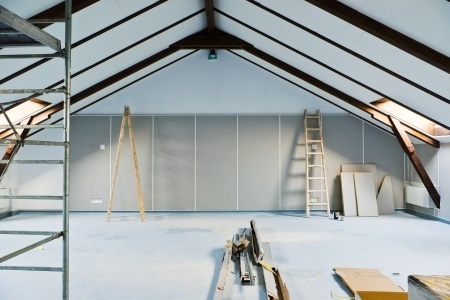In your house hunting journey, you’ve likely encountered a property that’s perfect in every way — except for that one thing. Maybe it’s a slightly (or really) outdated kitchen, one too few bedrooms, or some minor to moderate termite-induced damage to the sill plate. Here in central Louisiana, wet basements are quite common and a home inspector will likely discover black mold and other allergens as a result.
Most commonly encountered “problems” or “nice to haves” in a prospective property are excellent candidates for the FHA 203(k) loan programs, particularly when you consider the availability of inventory in our local market, interest rates are nearly all-time lows, and the prospect of quickly accumulating equity as a result of home improvements — so rather than walk away, take a closer look at renovation loans as a means to address needed (or wanted) improvements. You’ll increase value in the home and the surrounding area gets a lift, too. We’re seeing this regularly in Central City, New Orleans where neglected properties can be purchased for comparatively little and rehabbed through the 203(k) loan programs.

So what make makes a home a good renovation loan candidate? Let’s look at some commonly encountered issues.
Home Issue: Water in the basement and other water damage
A wet basement invariably leads to mold, one of several health and safety issues an FHA inspector would discover. Mold can cause severe quality-of-life issues, including respiratory distress and allergic reactions. Under the 203(k), water damage and related problems can be addressed through waterproofing, mold removal and replacing inefficient or damaged downspouts and gutters.
Do Outdated Kitchens Make Good Renovation Loan Candidates?
Old, poorly working appliances, peeling paint and leaky plumbing and cabinetry from 30 years ago can quickly turn some people away from an otherwise ideal home for their needs. Of all the home improvements one can take on, remodeling a kitchen and outfitting it with all new appliances and fixtures is one of the easiest ways to increase value; in fact, it’s one of the leading ranking factors used by an appraiser in determining the worth of the home relative to others in the area.
What to do with too few Bedrooms?
Any remodeling and rehabbing project that involves structural repairs fall under the 203(k) Standard. If you’ve found a three bedroom home in your price range but really need that fourth bedroom, rolling in the cost of the work into the life of your mortgage loan means you don’t have to compromise. You’ll get the fourth bedroom you need in the house you want.
Will a Renovation Loan Help with a Termite-Damaged Sill Plate
Termite damage poses a serious safety issue, and sill plates damaged by termites need to be replaced or the structural stability of the home is severely compromised. Older homes which have sat vacant for a long period of time or have otherwise been neglected will show signs of termite infestation. A 203(k) loan will help finance the cost of the project, and since we’re talking about structural work, the Standard is, well, standard.
Are Aging, Leaky Windows Good Renovation Projects?
Leaky, drafty windows aren’t just unattractive – they’re inefficient and will cost you in high utility costs especially in the height of Louisiana summer. Replacing windows, doors and siding increase curb appeal and keep those utility bills under control.
The odds are good that if the windows and doors are grossly inefficient and drafty, the roof may need to closely examined for weak spots and replaced, too.


